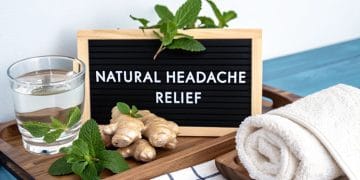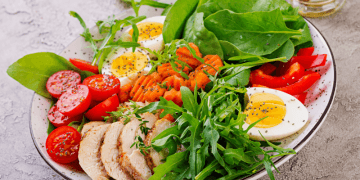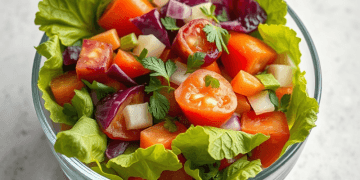Last Updated on June 23, 2025 by Lauretta Iyamu, PharmD
An essential part of planning meals as a person with diabetes is going to the grocery store and buying the ingredients you have prepared to eat. You may think, “I have been doing the family food shopping for a long time. I know everything about the store, and there is nothing you can tell me about how to shop”. In this article, you’ll learn how to read labels for diabetics rightly.
What is an acceptable way of reading labels?
You might be correct, but have you ever turned the package over and read a food label? Or you have. Have you ever gone beyond the calorie count? Many people don’t, but now that you have diabetes, it’s great to learn how.
The Food and Drug Administration redesigned and standardized the label so that each prepared food manufacturer must follow the same format (1).
Each label must show how much total carbohydrate (including dietary fiber and sugar), cholesterol, sodium, and fat a product contains. It must also list the number of minerals, proteins, saturated fat, and vitamins A and C and the total calories and calories from fat.
Elements of a Food Label
Now let’s go through the major elements of a food label;
1) Content versus percent of the daily value
The top part of the label consists of lists of the nutrients as a percentage of what an average person requires based on a two thousand calorie diet.
The bottom part of the label lists the actual amount of nutrients in that package. As a guide for diabetics, the top is a general guide, while the bottom is an essential part of your food plan (2).
2) Serving size
You may have wondered sometimes what these manufacturers must be thinking as if they package their products for a flock of birds because the serving size is always too small.
When you look at the number of calories in a serving size, you might only see a thimbleful in your dish. But, on the other hand, you might also think spending that many calories on such a little bit of prepared food are not worth your time.
You might as well realize that eating only half a cup is too tricky, and you might be tempted to finish the entire container.
Whatever the eating habits or food preferences you have gotten, ensure you note the serving size and have a good idea of what half a cup looks like on a plate, or if possible, you should measure it.
The amount of nutrients listed on the label refers to each serving and not the entire container (3).
3) Total Carbohydrate
You should focus your attention on this. First, note that this is the total amount of carbohydrates you consume rather than the type of sugar and starch affecting your blood sugar.
4) Types of Fat
You should choose foods with the lowest percentage and total saturated fat (4).
5) Ingredients
The food ingredients contained in the package are itemized in descending order by weight. The first 4 or 5 items are often the significant ingredients, followed by flavors and chemicals used as preservatives.
Therefore, when buying prepared foods, you should match them to your meal plan. As you check labels, you will find some terms you haven’t heard of before or perhaps don’t know their meaning.
Many items on supermarket shelves have the word ‘natural’ or ‘healthy’; the majority do not have a regulatory sense. Here are some terms on the label and their purpose;
6) Low Fat
It means no more than 3g of fat per serving for individual foods and no more than 30% of calories from fat for a complete meal.
7) Low in saturated fat
This means no more than 1g of saturated fat per serving and no more than 15% of total calories for saturated fat.
8) Low Sodium
This means 140mg or less per serving
9) Fat-Free
This means less than 0.5g of fat per serving
10) Light
This is one–third fewer calories or 50% less fat per serving
11) Low cholesterol
It is no more than 20mg of cholesterol and 2mg or less of saturated fat per serving.
12) Cholesterol free
It is less than 2mg of cholesterol and 2g or less saturated fat per serving.
13) Low Calorie
It means no more than 40 calories per serving.
14) Reduced / Less
It contains 25% or fewer nutrients than a comparable food.
15) Sugar-Free
It means less than 0.5g of sugar preserving.
16) Dietetic
This does not necessarily indicate the item is good for you. It simply means that something has been changed or replaced in food, like salt, sugar, total fat, or cholesterol.
17) Natural
Concerning meat and poultry, it indicates that no chemical preservative or hormone has been added; for other kinds of foods, this has no regulatory meaning.
Conclusion
If you have diabetes or are just newly diagnosed, it is essential to know what you are eating and how to integrate these ingredients into your meal plan.
Next time you go shopping for groceries, you should take a minute to review the food package labels to know if that item will be good for your health.
References
- Center for Food Safety and Applied Nutrition. (n.d.). Food Labeling & Nutrition. U.S. Food and Drug Administration. Retrieved April 20, 2022, from https://www.fda.gov/food/food-labeling-nutrition
- Robinson, L. (2022, March 29). The diabetes diet. HelpGuide.org. Retrieved April 20, 2022, from https://www.helpguide.org/articles/diets/the-diabetes-diet.htm
- Centers for Disease Control and Prevention. (2021, August 10). Carb counting. Centers for Disease Control and Prevention. Retrieved April 20, 2022, from https://www.cdc.gov/diabetes/managing/eat-well/diabetes-and-carbohydrates.html
- Read the nutrition facts label to choose … – NHLBI, NIH. (n.d.). Retrieved April 20, 2022, from https://www.nhlbi.nih.gov/files/docs/resources/heart/filipino-health-manual/session-5/readlabel.pdf









































